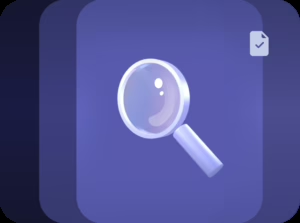At Assumed, our mantra is never assume anything, but there are exceptions. That is why data leak detection is a huge part of what Assumed offers. For most businesses, it is safe to assume that their customer contacts are valuable assets worth protecting. There is always more that a business can do to protect its customer data—in its best interest and also in the best interests of consumers, who deserve their personal data to be treated with utmost respect and care. This mutual respect for data protection can build trust and result in a mutually beneficial relationship if done correctly.
Table of Contents
The Need For Data Leak Detection Capabilities
Many companies use a CRM or contact list manager to manage their customer contact lists for newsletters and marketing communications. This contact data may be stored in Salesforce, Hubspot, Constant Contact, Active Campaign or any similar system—perhaps even just a simple spreadsheet or database. Knowing how to detect a leak or compromise of these data stores is essential to prevent an all-out breach.
One of our partners, boberdoo.com, a leading lead distribution and call routing solutions provider, uses HubSpot to manage multiple contact lists for communicating with customers and prospects. It includes newsletters, onboarding, sales, and general customer marketing activities. boberdoo uses Assumed to monitor these contact lists to detect indicators or data leaks and ensure that only authorized communications reach their customers.
Assumed provides a powerful yet simple method you can use for data leak detection to seed customer contact lists with artificial contacts that act as highly effective leak-detecting records. This enables organizations to proactively identify unauthorized data access, strengthen security measures, and mitigate risks associated with data breaches. These seeded contacts serve as early warning signals, allowing businesses to detect and respond to potential leaks before they escalate. Whether facing external cyber threats, malicious insiders, or accidental exposure, Assumed’s solution reinforces data protection and enhances compliance efforts while ensuring organizations stay one step ahead of evolving security challenges.

The setup process for data leak detection is simple
1. Purchase an Assumed contact for each list you want to monitor. These artificial contacts or honey tokens include unique contact details with working email addresses and phone numbers. They can be localized to specific states and purchased for as little as $1 monthly. At least one contact should be used for each data store that needs to be monitored.
2. These artificial records are planted in each of boberdoo’s marketing lists. The contact can be placed directly in a HubSpot database, added to a list or workflow, or used to fill out a form that a consumer would use to join a mailing list, for example. In Assumed, labels are applied to each contact to help identify where the contact was placed and provide additional context.
3. Monitor the Assumed inbox to see what communications are reaching its customers. Unexpected email messages, phone calls, or text messages to these contacts may indicate a data leak that needs your attention. Valid communications can be added to an “allowed list” to cut the noise, and daily or weekly activity notifications help boberdoo to understand what activity may need to be investigated further.
For boberdoo, the benefits of monitoring its customer contact lists in HubSpot go beyond data leak detection. By filling out relevant forms to inject the seeds records, there are added benefits, including visibility into sales touchpoints, onboarding processes, and content presentation that can provide valuable insights into boberdoo’s marketing and communications processes that create opportunities for course corrections and continuous improvements to their email campaigns. If using Assumed for data leak monitoring sounds like something you’d like for your business, you can start today!

